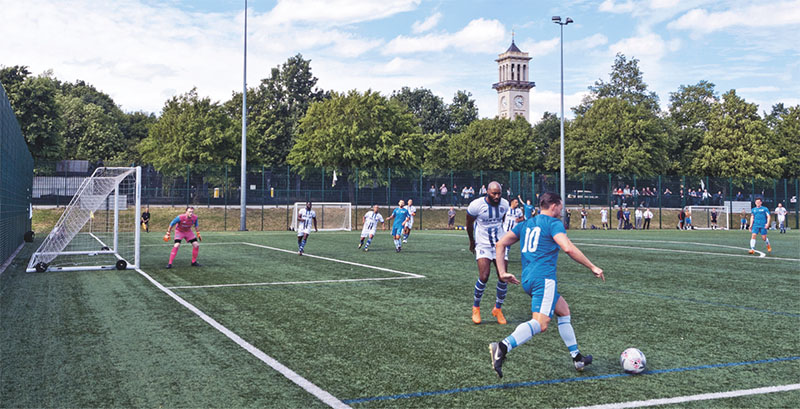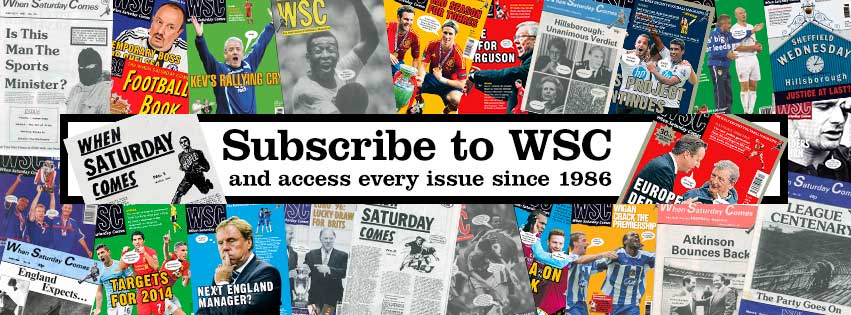
While the relative merits of the capital’s tube lines have long been a favourite topic of commuter conversation, it’s on the pitch that TfL staff are proving which is the winner
21 August ~ Many of London’s major football clubs are particularly well served by the Tube, but relatively few supporters will be aware that several of the 11 lines have their own football club – or that the London Underground League has been in existence since 1996. The last match of the season, the final of the London Underground League Cup between Piccadilly and Tubelines FC, was played on June 17. Until 2017, Tube Lines Limited was the company responsible for the infrastructure of the Jubilee, Northern and Piccadilly lines. It has since been brought in-house under the overall management of London Underground, and now looks after the District, Central and Bakerloo lines as well.
The origins of the league date back to 1993 when co-founder Andy Anthony approached one of the directors and asked for funding for a football pitch for the friendlies that were being organised between lines and stations in the early 1990s. Until 1999 there was just a single division, subsequently divided as the lesser sides weren’t able to compete and would be thrashed regularly. Now each of the two divisions has six clubs, drawn from across the network and including British Transport Police and London Overground. From the early days of the league, when there sometimes wasn’t even a referee, let alone linesmen, now there are three officials for every match and fourth officials for cup matches. The FA sends referees to be assessed on matches. All players must be employees of Transport for London (TfL), which has obvious scope for networking and team-building, but also the potential for ringers.
Previously players could only play for the team representing the station or line on which they worked. In the early days this was necessary to ensure that each team had sufficient players from which to choose, but presumably it must also have caused problems at major interchanges. These days, however, players can more or less play for whoever they wish, as long as they have a valid TfL or London Underground pass. Since the pass check was introduced, the problem of ringers has been resolved.
With almost 27,500 full-time TfL employees, clubs have a large pool from which to select a team. Nevertheless, shift patterns are a major issue that the league has to work around. Fixtures tend to be 4pm midweek kick-offs for this reason, and centre on the two artificial pitches at Market Road in Islington, near Caledonian Road station on the Piccadilly Line. Finding time to train is another issue. Some, like Piccadilly, rotate a large squad and front-load their training before the season actually begins, using matches to maintain fitness. Remarkably, perhaps, the standard in the top division at least is quite high, with some players also playing at a reasonable non-League standard or Sunday football at weekends.
It is testament to the league’s progression and quality that a London Underground side has recently been formed, albeit not officially sanctioned by the league as yet. Nevertheless, the thought of a team containing the cream of the London Underground League playing County FA sides and other rail networks is appealing. The league also now has its first female manager and will have its first disabled player, an amputee, next season.
The most successful club are District Line FC, Division One champions on ten occasions, although they currently find themselves in Division Two. While they have struggled in the past few years, there has been a resurgence in the fortunes of Piccadilly FC, another of the league’s founder members. Having been relegated and almost folding in 2015, Piccadilly were unbeaten Division Two champions last season and have just lifted the Division One title for only the second time.
With players spread so thinly across the network, fielding a consistent side – or even 11 players – can be a problem for Tubelines, and it hampered their progress this season. At the final, they had a full-strength squad, with the exception of key player Kurt Smith who didn’t arrive until midway through the first half. He had been attending a points course in Acton.
If the scores were level on 90 minutes the match would go straight to penalties, as the pitch was only booked for two hours. They were not required, however, and it was Smith who came on to score the deciding goal – a stunning free-kick from distance – as Tubelines won 2-1, with both teams receiving their respective trophies after the match. David Bauckham
Photo by David Bauckham
This article first appeared in WSC 390, September 2019. Subscribers get free access to the complete WSC digital archive – you can find out more here
